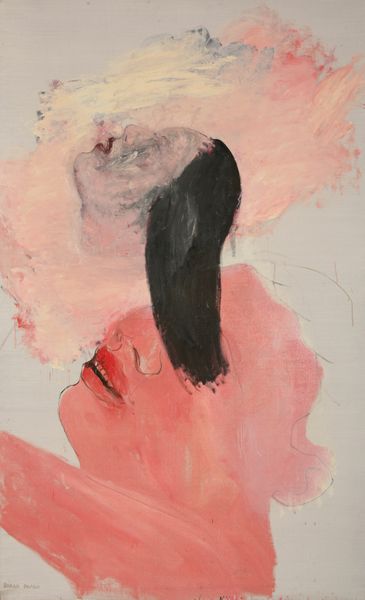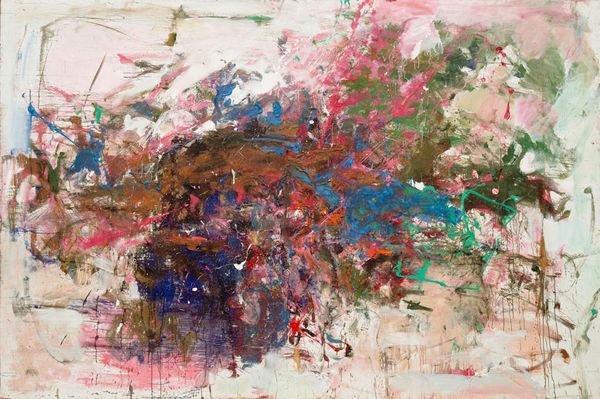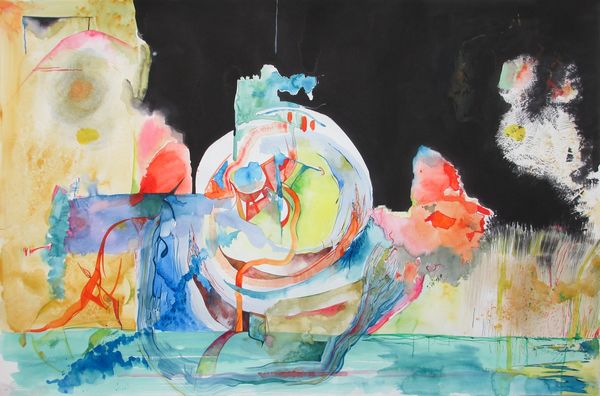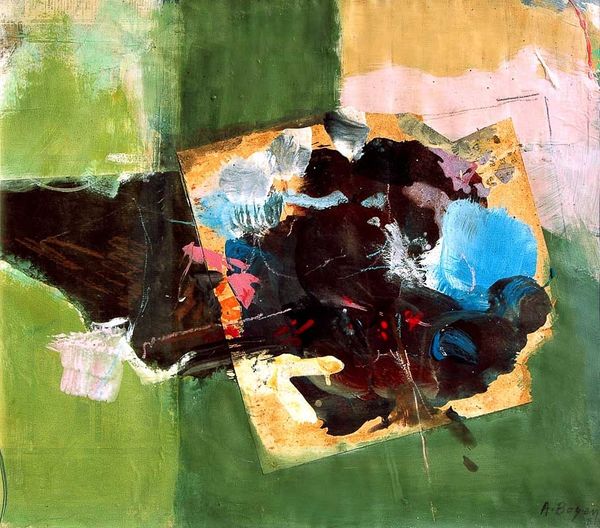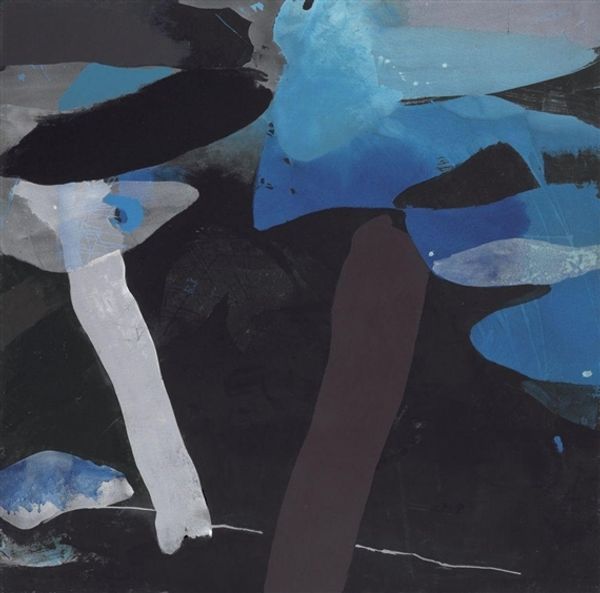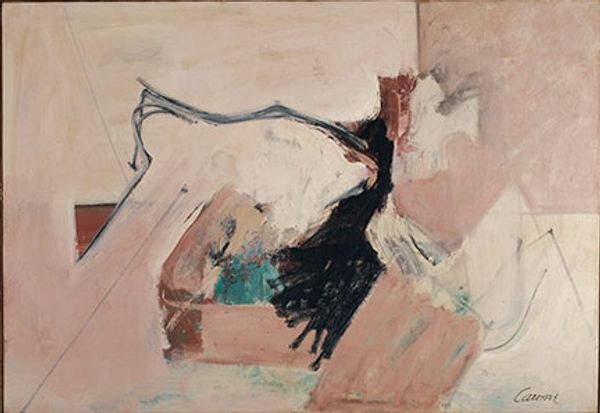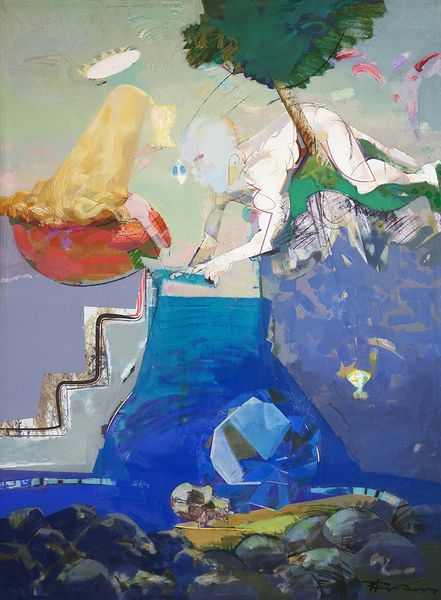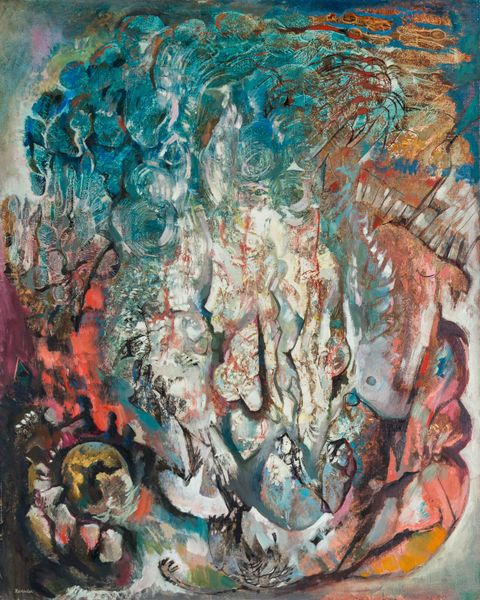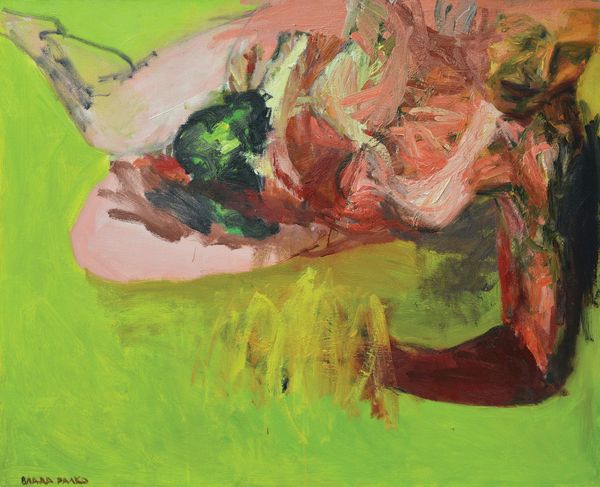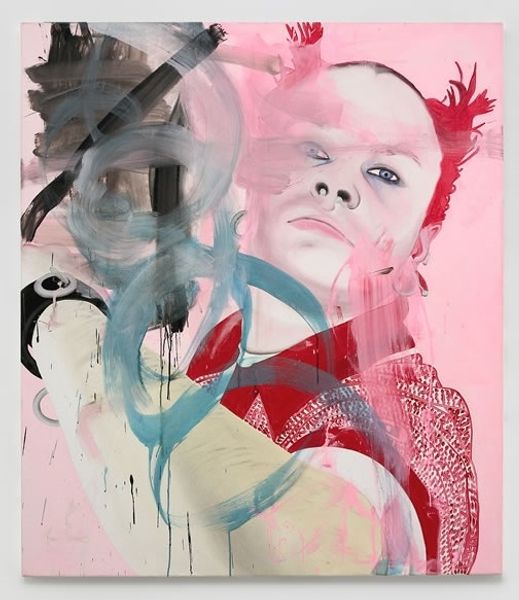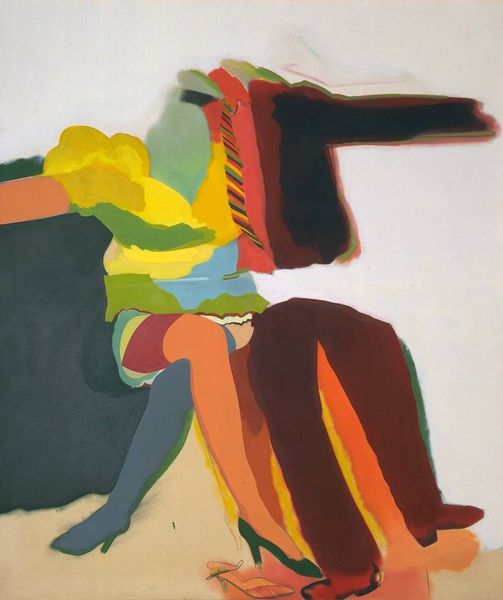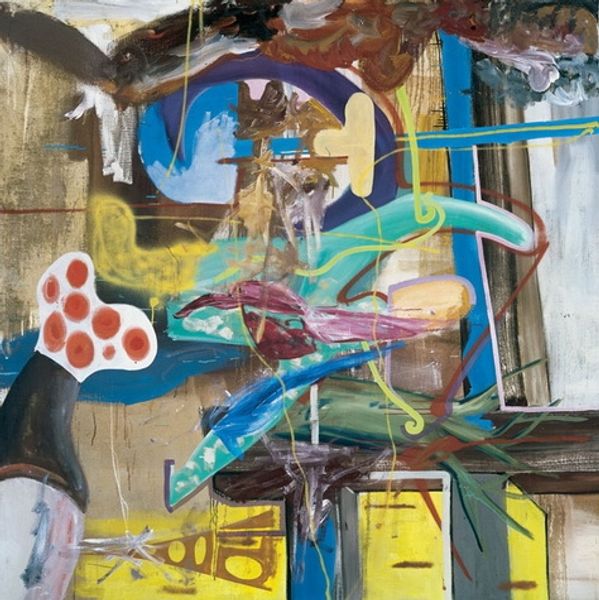
acrylic-paint
#
portrait
#
acrylic
#
abstract painting
#
acrylic-paint
#
figuration
#
oil painting
#
neo expressionist
#
neo-expressionism
Copyright: Vlada Ralko,Fair Use
Curator: This is Vlada Ralko's "Dolphins," created in 2008, a powerful piece executed in acrylic paint. Editor: It’s arresting. The rawness of the application… that pale blue almost feels like a backdrop for some kind of brutal theatre. Curator: Indeed. Ralko’s work often grapples with political and social anxieties, and her bold, expressive brushstrokes become a vehicle for exploring these tensions, placing her work squarely within the Neo-Expressionist movement. It directly addresses Ukrainian society. Editor: I am intrigued by the materiality and by the facture, which looks like fast layering; a performative aspect of the painting and the painting is the residue. What is also curious for me is the artist's approach to the bodies portrayed in the picture: How are the genders represented in relation to labour? Curator: That’s a really astute question, actually, considering Ralko's focus on societal roles. Looking at her use of figuration and portraiture, the rendering of form is clearly less about celebrating beauty and more about probing at discomfort and power dynamics. It also relates to how images function publicly within Ukrainian cultural space. Editor: I keep coming back to that application – the pink and the dark strokes hovering as well –it does reveal a specific urgency, a necessity in the making that overrides any concern for aesthetic polish. There is something raw and corporeal there. Curator: Absolutely. Considering when this was created, we can see how her style reflected anxieties of that period. Ralko actively challenges the established artistic traditions through the very visible, and visceral nature of her creative labour. Editor: For me, what sticks is that potent combination of a sense of vulnerability embedded into aggressive gestures, the social realities becoming physically manifest through process. Curator: It's hard to walk away without pondering the artist’s intention, especially knowing her activist stance. The social history here screams for attention. Editor: Yes, that intersection where social critique takes material form through the artist’s labour really provides an amazing insight, it pushes you to think beyond just the surface.
Comments
No comments
Be the first to comment and join the conversation on the ultimate creative platform.
